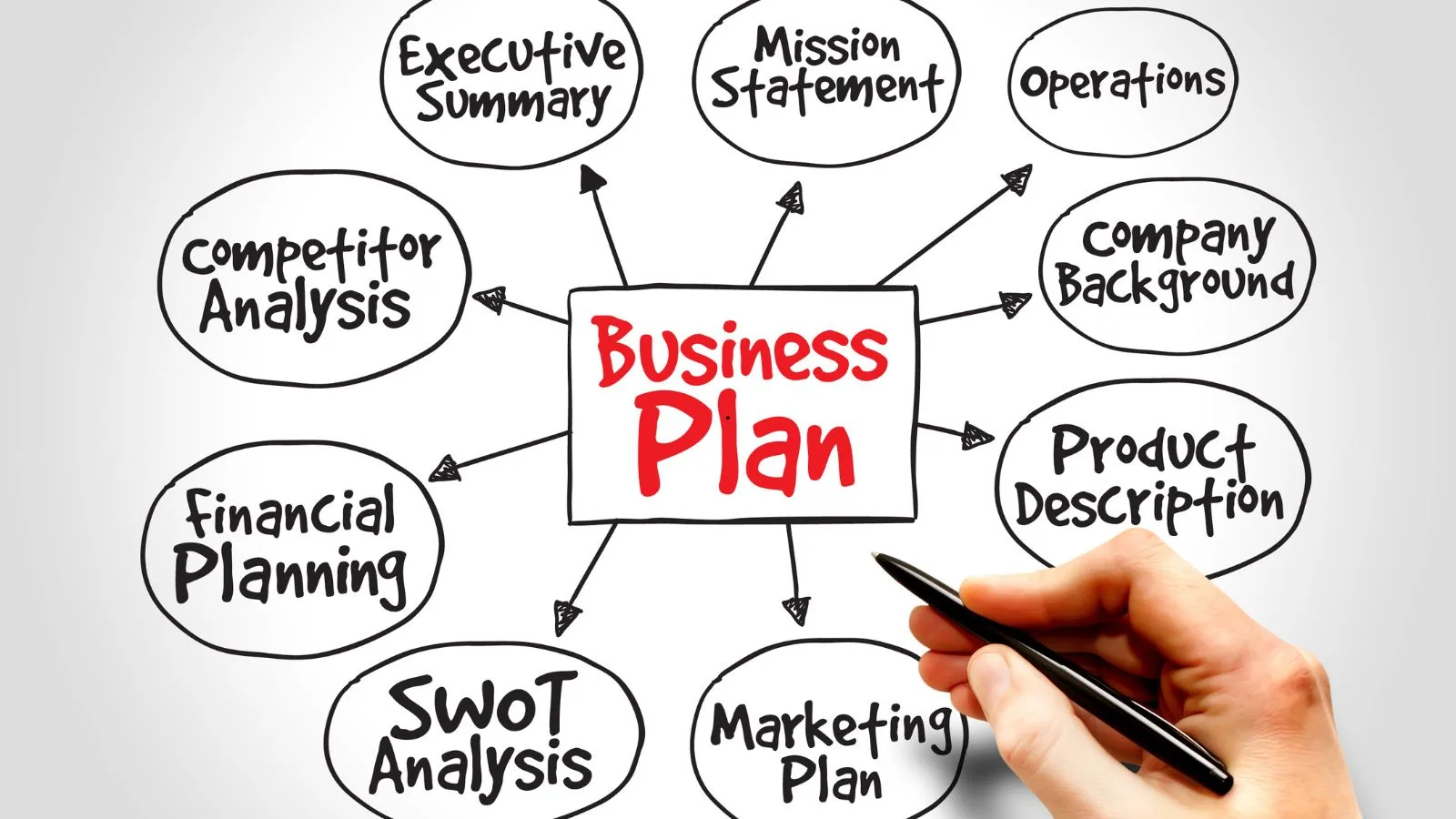A solid business plan ensures you’re on the right track. But how do you make one that maps out your vision and impresses investors? Let’s break it down.
What is a Business Plan?
A business plan is a detailed document outlining your business goals, strategies, and how you plan to achieve them. Think of it as a roadmap guiding you from inception to achieving your objectives.
A well-crafted business plan includes various sections, each serving a unique purpose. These sections range from the executive summary to financial projections, ensuring every aspect of your business is covered.
The Importance of a Business Plan
Creating a business plan might seem tedious, but its importance must be balanced. It helps you clarify your goals, identify potential challenges, and devise strategies to overcome them. Additionally, it’s a necessary tool for attracting investors and securing funding.
Investors and lenders must clearly understand your business model, market potential, and financial projections before committing their resources. A comprehensive business plan provides this insight, increasing your chances of securing the necessary support.
By regularly updating your business plan, you can adapt to changes in the market and keep your business on track. This proactive approach can spell the difference between success and failure.
Executive Summary
The executive summary is the first section of your business plan, but it’s often the last one you write. It provides a snapshot of your entire plan, summarizing your business idea, goals, and strategies.
How to Write an Effective Executive Summary
A practical executive summary is concise, engaging, and highlights the critical points of your plan. Focus on what makes your business unique and why it will succeed.
Example of an Executive Summary
XYZ Coffee Roasters aims to revolutionize the coffee industry by providing ethically sourced, high-quality coffee beans. Our mission is to create a sustainable and enjoyable coffee experience for our customers. With a team of experienced baristas and a commitment to sustainability, we plan to open our first café in downtown Boston and expand to three locations within five years.
Company Description
Business Overview
This section provides an in-depth look at your business, including its name, location, and your products or services.
Mission and Vision Statements
Your mission statement defines your purpose and values, while your vision statement outlines your long-term goals.
Company History and Milestones
Share your company’s history, including any significant milestones or achievements. This helps build credibility and demonstrates your track record.
Market Analysis

Industry Description and Outlook
Please provide a detailed description of your industry, including its size, growth potential, and trends.
Target Market Identification
Identify your target market, including demographics, preferences, and purchasing behavior.
Market Needs and Trends
Discuss the needs and trends within your target market and how your business will address them.
Competitive Analysis
Analyze your competitors, their strengths and weaknesses, and how you plan to differentiate your business.
Organization and Management
Organizational Structure
Outline your organizational structure, including key roles and responsibilities.
Ownership and Management Team
Introduce your ownership and management team, highlighting their experience and expertise.
Roles and Responsibilities
Detail the roles and responsibilities of each team member to ensure clarity and accountability.
Board of Directors and Advisors
If applicable, introduce your board of directors and advisors, showcasing their guidance and support.
Products or Services Line
Description of Products or Services
Provide a detailed description of your products or services, including features and benefits.
Unique Selling Proposition (USP)
Highlight your USP, explaining what sets your products or services apart.
Product Lifecycle and Development
Discuss the lifecycle of your products, from development to market launch, and any plans for future growth.
Research and Development (R&D)
Explain your R&D efforts and how they contribute to your business’s innovation and growth.
Marketing and Sales Strategy
Marketing Plan Overview
Outline your marketing plan, including your target audience, marketing channels, and strategies.
Sales Strategy
Discuss your sales strategy, including your sales process, team structure, and goals.
Pricing Strategy
Explain your pricing strategy, including how you determine prices and any discounts or promotions.
Advertising and Promotion
Detail your advertising and promotional activities, including online and offline channels.
Sales Forecast
Provide a sales forecast, including projected sales volume and revenue for the next few years.
Funding Request
Funding Requirements
State your funding requirements, including the amount needed and the purpose of the funds.
Future Funding Requirements
Discuss any future funding requirements and how you plan to secure additional funding.
Use of Funds
Explain how you will use the funds, including specific expenses and investments.
Funding Request Strategy
Outline your funding request strategy, including your preferred funding sources and terms.
Financial Projections
Financial Statements Overview
Provide an overview of your financial statements, including your profit and loss statement, cash flow statement, and balance sheet.
Profit and Loss Statement
Detail your profit and loss statement, including your revenue, expenses, and net profit.
Cash Flow Statement
Discuss your cash flow statement, including your cash inflows and outflows.
Balance Sheet
Provide a balance sheet, including your assets, liabilities, and equity.
Break-Even Analysis
Conduct a break-even analysis to determine when your business will become profitable.
Appendix
Supporting Documents
Include any supporting documents, such as resumes, product images, and market research data.
Resumes of Key Management
Provide resumes of key management team members to showcase their experience and expertise.
Product Images
Include images of your products to give readers a visual representation of what you offer.
Market Research Data
Share any market research data that supports your business plan and validates your market analysis.
Legal Documents
Include any legal documents, such as permits, licenses, and contracts.
Tips for Writing an Effective Business Plan
Be Clear and Concise
Avoid jargon and complex language. Write clearly and concisely to ensure your plan is easy to understand.
Use Data and Research
Support your claims with data and research to build credibility and demonstrate your knowledge.
Keep the Audience in Mind
Tailor your plan to your audience, whether it’s investors, lenders, or partners.
Regularly Update the Plan
Regularly update your business plan to reflect business and market changes.
Common Mistakes to Avoid
Lack of Research
Ensure you conduct thorough research to support your claims and validate your assumptions.
Unrealistic Financial Projections
Avoid overly optimistic financial projections. Be realistic and provide evidence to support your estimates.
Ignoring Competition
Don’t ignore your competition. Conduct a thorough competitive analysis to identify your strengths and weaknesses.
Poor Organization and Structure
Organize your plan logically and clearly to ensure it flows smoothly and is readable.
Tools and Resources
Business Plan Templates
Use business plan templates to streamline the writing process and ensure you include all necessary sections.
Financial Planning Tools
Utilize financial planning tools to create accurate financial projections and manage your finances.
Market Research Resources
Access market research resources to gather data and insights about your industry and target market.
Professional Assistance and Consulting
Consider seeking professional assistance and consulting services to help you create a comprehensive and polished business plan.
Recap
Creating a business plan is necessary in starting and growing a successful business. Following the steps outlined in this article, you can craft a plan that guides your business, attracts investors, and secures funding.




